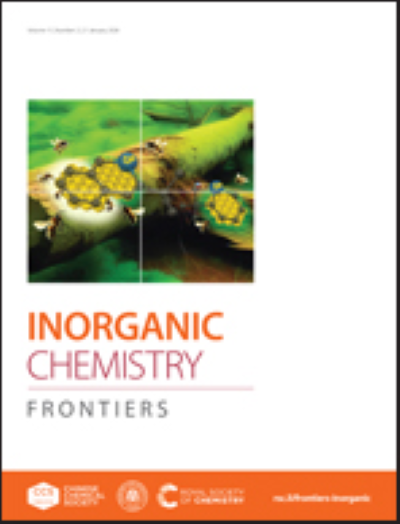Insights for controlling plutonium behavior in hydrochloric acid solutions
IF 6.1
1区 化学
Q1 CHEMISTRY, INORGANIC & NUCLEAR
引用次数: 0
Abstract
Advancing understanding of aqueous chemistry for plutonium is important because it impacts energy production, environmental management, and national security. Unfortunately, plutonium's aqueous chemistry remains poorly characterized. We addressed this problem by characterizing Pu(IV) redox and coordination chemistry in aqueous solutions as a function of hydrochloric acid concentration using X-ray absorption spectroscopy, ultraviolet-visible near-infrared spectroscopy, and electrochemistry. The impact of Pu–Cl vs. Pu–OH2O bonding was correlated with the stability of different plutonium oxidation states. We discovered that anionic Cl1− ligands stabilized electron-deficient Pu(IV) over Pu(III) and neutral H2O ligands stabilized Pu(III) over Pu(IV). These findings offer a way to control plutonium electron transfer chemistry and imply that selective stabilization of Pu(IV) or Pu(III) may be achieved through tuning the electron donating ability of the ligand. Overall, this work advances predictive capabilities for aqueous plutonium chemistry, particularly within nuclear application spaces.

控制盐酸溶液中钚行为的见解
推进对钚水化学的理解是重要的,因为它影响能源生产、环境管理和国家安全。不幸的是,钚的水化学性质仍然很差。我们通过使用x射线吸收光谱、紫外-可见近红外光谱和电化学来表征水溶液中Pu(IV)氧化还原和配位化学作为盐酸浓度的函数来解决这个问题。Pu-Cl与Pu-OH2O键合的影响与不同钚氧化态的稳定性有关。我们发现阴离子Cl1−配体在Pu(III)上稳定了缺电子的Pu(IV),而中性H2O配体在Pu(IV)上稳定了Pu(III)。这些发现提供了一种控制钚电子转移化学的方法,并暗示可以通过调节配体的给电子能力来实现Pu(IV)或Pu(III)的选择性稳定。总的来说,这项工作提高了水性钚化学的预测能力,特别是在核应用领域。
本文章由计算机程序翻译,如有差异,请以英文原文为准。
求助全文
约1分钟内获得全文
求助全文
来源期刊

Inorganic Chemistry Frontiers
CHEMISTRY, INORGANIC & NUCLEAR-
CiteScore
10.40
自引率
7.10%
发文量
587
审稿时长
1.2 months
期刊介绍:
The international, high quality journal for interdisciplinary research between inorganic chemistry and related subjects
 求助内容:
求助内容: 应助结果提醒方式:
应助结果提醒方式:


